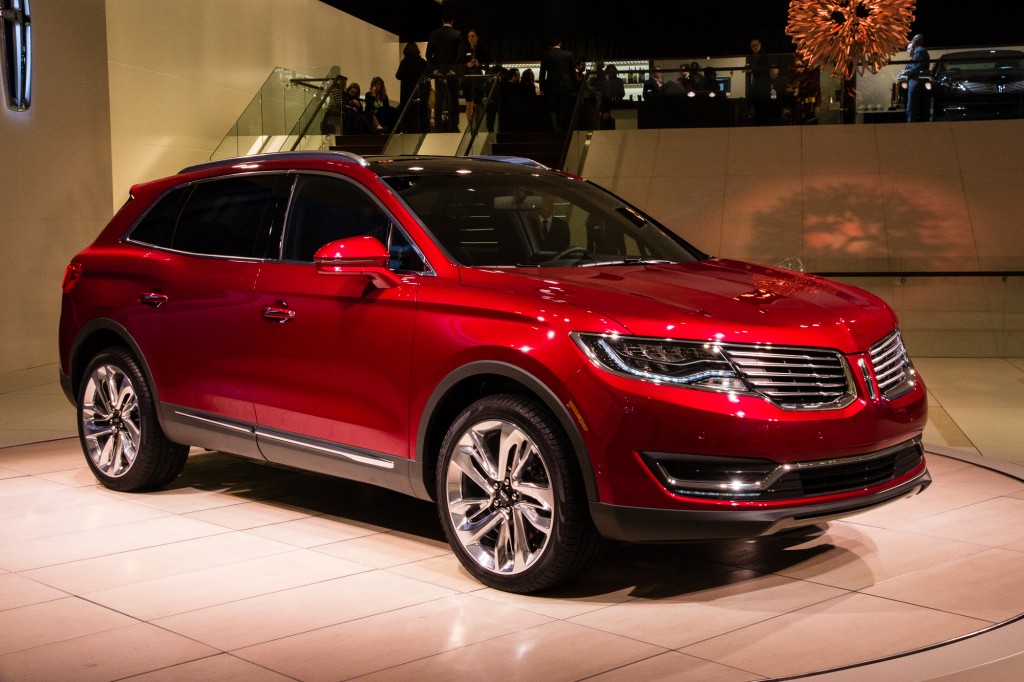It's all about the asterisk, it turns out.
Most buyers likely assume that the conditions for rating a new car's fuel economy and engine performance are identical.
For at least one carmaker--Ford--and possibly others as well, that turns out not to be the case: Different gasoline formulations are used to test gas mileage than are used for engine output.
DON'T MISS: EPA Issues New Guidelines For Automaker Fuel-Economy Testing
A case in point is the engine output specifications on the website for the 2016 Lincoln MKX crossover utility vehicle fitted with the turbocharged 2.7-liter EcoBoost four-cylinder engine, which are given as 335 horsepower and 380 pound-feet of torque.
An asterisked note on the power rating indicates that it is based on a test performed using 93-octane fuel, although the vehicle only requires use of conventional 87-octane gas.
Engine power could be 5 to 10 percent lower if tested using more common regular 87-octane fuel--especially at higher ambient temperatures--though Ford does not offer a power number for the lower fuel grade.

2016 Lincoln MKX, 2015 Detroit Auto Show
Modern engine-management software, in this case adaptive knock control, allows the engine-control system to alter combustion settings to accommodate differing grades of fuel. That permits turbocharged engines to be run on the lowest available grades of U.S. gasoline.
The problem is that 93-octane gasoline is not available in some areas of the U.S., especially west of the Rocky Mountains and throughout most of California.
It's also as much as 50 cents per gallon more expensive than conventional 87-octane gasoline.
ALSO SEE: EPA Wants Carmakers To Verify Gas Mileage With Road Testing Too
Meanwhile, the 2016 MKX's fuel-economy ratings on the FuelEfficiency.gov website--21 mpg combined for the front-wheel-drive version, 19 mpg with all-wheel-drive--are performed using another fuel also not available in all areas of the U.S.
That's 87-octane gasoline without any added ethanol, known as E0 or G100 to differentiate it from the increasingly common E10, composed of 10 percent ethanol and 90 percent gasoline.
The EPA compensates for this (and other factors), as it describes in Fuel Economy Testing and Labeling, which includes responses to common questions (including one about why it doesn't use E10 for the tests):
Sign for 'ethanol-free premium gas' at Stewart's, Port Ewen, NY, Mar 2015 [photo: William Benson]![Sign for 'ethanol-free premium gas' at Stewart's, Port Ewen, NY, Mar 2015 [photo: William Benson] Sign for 'ethanol-free premium gas' at Stewart's, Port Ewen, NY, Mar 2015 [photo: William Benson]](https://images.hgmsites.net/lrg/sign-for-ethanol-free-premium-gas-at-stewarts-port-ewen-ny-mar-2015-photo-william-benson_100505241_l.jpg)
EPA does account for the impact of low-level ethanol blends in our fuel economy estimates. Ethanol has a lower energy density than gasoline—about one-third less energy per gallon.
That means a car operating on 10 percent ethanol would require about 3 percent more fuel to travel one mile than a car operating on gasoline and thus have about 3% lower fuel economy.
EPA currently reduces all fuel economy test values by about 10 percent to account for ethanol in gasoline and other factors such as wind, hills, and road conditions
The agency also notes that , "Later this decade, EPA is phasing-in a requirement to change our federal emissions test fuel to include 10 percent ethanol by volume."
Other carmakers may use the same approach to selecting fuels for different tests, although we didn't find any in a quick scan of several carmaker sites.
Ford does tacitly appear to have acknowledged that disclosing the differing fuels is important information for potential buyers.
Gas pump
When this topic first arose last week among a discussion group of automotive journalists, the footnote was at the bottom of the specs page. Now it's directly underneath the 335-hp power rating.
Score one for consumer transparency.
[Our thanks to Mark Phelan, Joshua Stone, Csaba Csere, Sam Abuelsamid, and other reporters who chimed in on this topic]
_________________________________________________













